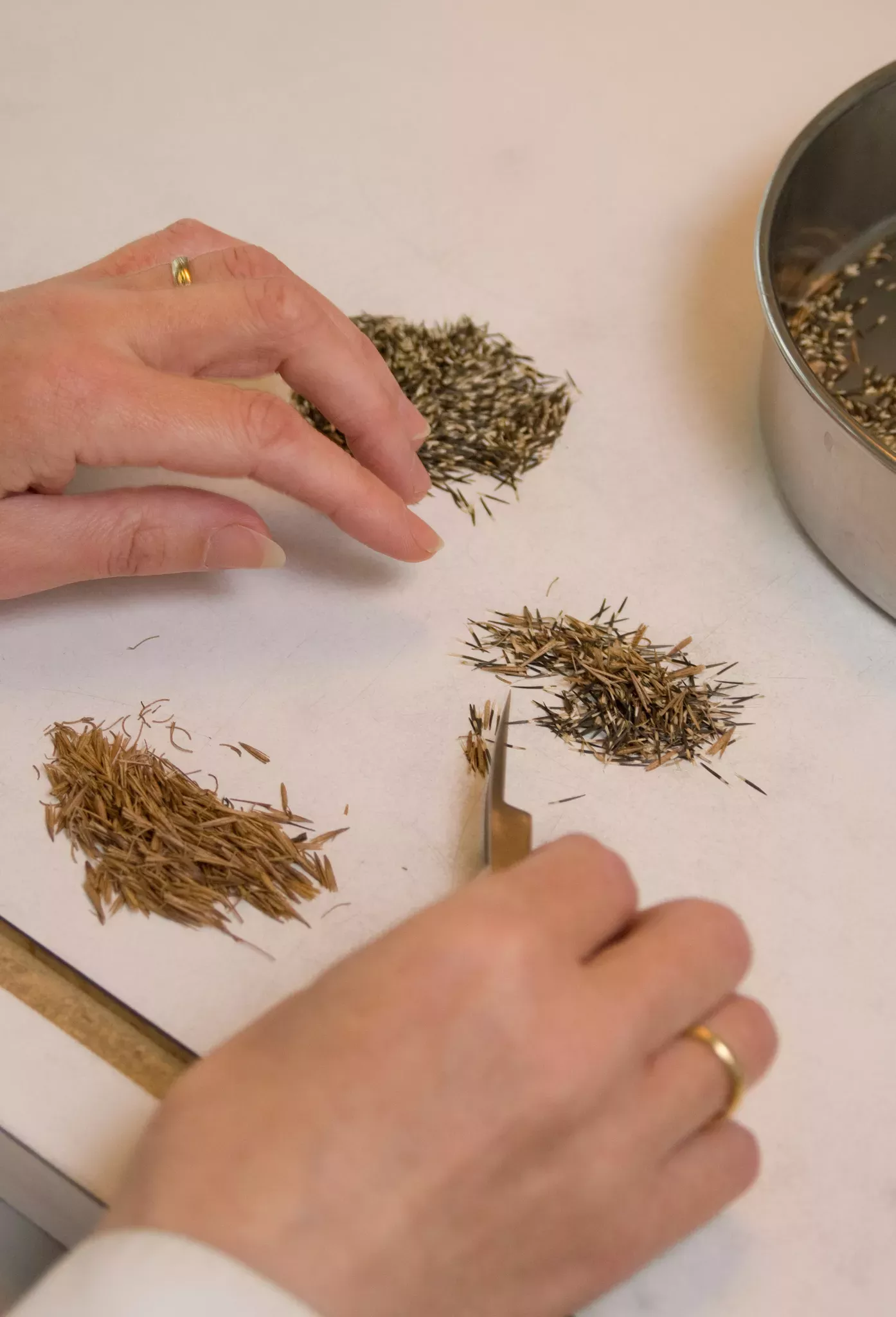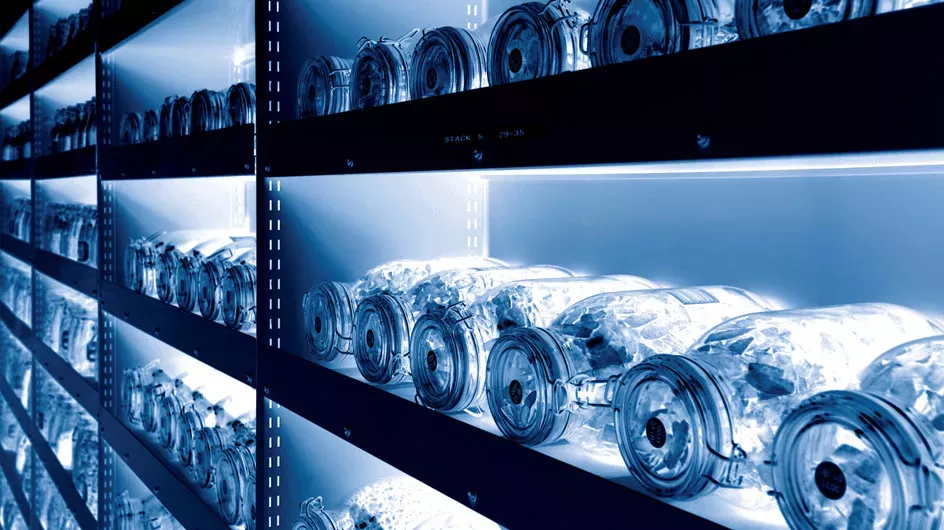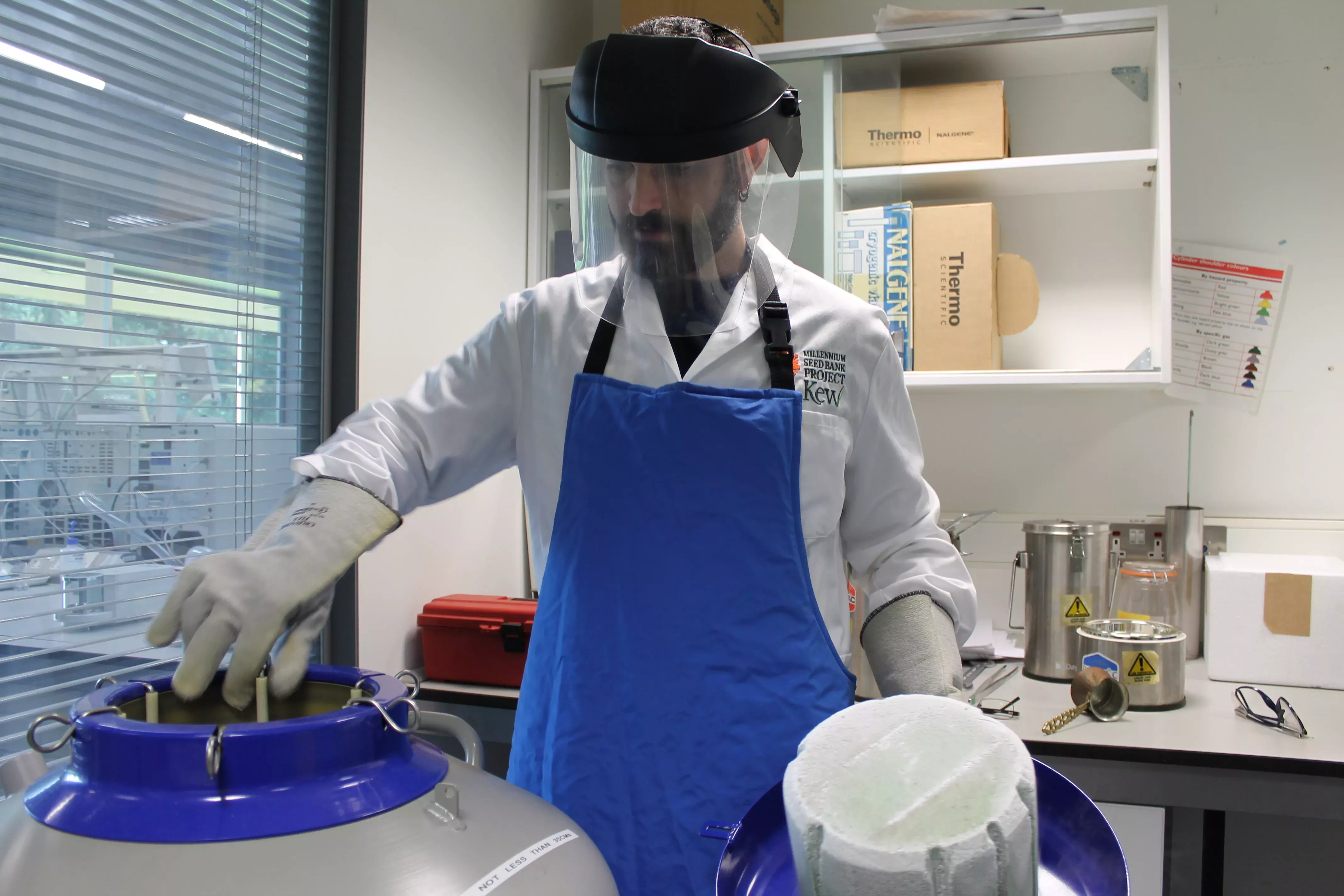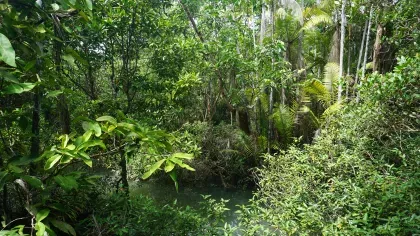9 February 2022
Freezing seeds for the future
Find out how our scientists and partners at the Millennium Seed Bank are helping to future-proof our planet

If you’ve seen the final episode of David Attenborough's new BBC series The Green Planet, you’ll have joined him on a visit to our Millennium Seed Bank at Wakehurst.
Buried underground in the heart of Sussex, the Millennium Seed Bank (MSB) stores over 2.4 billion seeds, gathered from wild plants around the world.
With two out of every five plant species threatened with extinction, seed banks are now more crucial than ever in providing a backup of threatened plants.
If the need arises, this invaluable conservation resource can help re-establish at-risk plant populations in their native habitat so they are preserved for generations to come.

Getting collection right
Along with a network of partners across 97 countries and overseas territories, Kew Scientists have successfully banked over 50,000 species of plants, with nearly 40,000 of these located in the Millennium Seed Banks vaults.
The first step to properly banking a seed begins when it is collected in the field.
When seeds are collected from a population of plants, scientists need to gather essential data about the collection, such as location, habitat description and time of year.
The species' identity must also be confirmed by gathering a voucher specimen. This is a pressed specimen of the plant that can be sent to a herbarium, and have its identity confirmed by a botanist.
There are strict guidelines in place to make sure that from any given plant, fewer than 20% of available ripe seeds are collected, reducing the impact of collection on the continued survival of the population.
Once the seeds are collected and brought to the MSB, they are given unique reference numbers which can be matched with their field data and herbarium specimens.

Freeze-dried seeds
Once the seeds have arrived at our MSB, they are dried in a humidity-controlled environment. This initial drying phase increases a seed’s life by 40 times.
Once dried, seed collections are cleaned to remove immature specimens and plant debris.
The quality of a sample of seeds is also measured by cut testing (cutting them in half) or x raying them to see if they contain a full seed, are infested with insects or are empty.
Once the seeds are dried and cleaned, they can be added into the collections in the MSB vault.
Seeds are placed in air-tight containers, labelled and then stored at -20°C in the sub-zero chambers underground at the MSB.
Once the seeds are frozen, samples will be removed and tested to see if they can still germinate (sprout from seed) successfully. This is repeated at ten-year intervals to make sure that the banked seeds remain viable for when they may be needed in the future.
Seed collections are usually stored in their country of origin, as well as at the MSB. This duplication creates an extra level of security and helps make the seeds more accessible.

Banking tricky species
There’s still plenty of work to be done to back up plant species for the future. Thousands more species need to be collected and added to the MSB vault.
But it’s not just the collecting that poses a challenge. Some plants, known as 'exceptional species', are not as easily added to the vaults.
Some seeds can’t tolerate the drying or freezing process, so can’t go through the standard seed banking procedures. Others are incredibly short-lived under normal seed bank conditions.
Some plants, such as ferns, don’t produce seeds at all, but still need to be preserved.
So what’s the best way to preserve these species for the future?
Scientists across the Millennium Seed Bank Partnership are working to find new ways of banking these exceptional species. Our researchers are using cryopreservation, where seeds, or parts of seeds, are very rapidly dried and then frozen using liquid nitrogen.
With new techniques like this, we hope to safeguard even more species for the future in the MSB.

'A little grain of hope'
As Sir David Attenborough said in the final episode of The Green Planet, faced with so many plant species under threat of extinction, we need an insurance policy. That’s exactly what the MSB provides: a back-up for the natural world.
While it’s crucial to continue to protect populations of plants in the wild, having a global network of seed banks ensures that fewer threatened species will be lost forever.
By banking more species at Wakehurst every day, we are helping our green planet survive and thrive, one seed at a time.



.jpg.webp?itok=plDhGkz6)